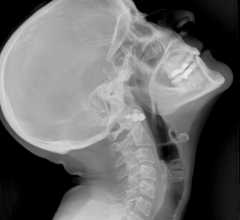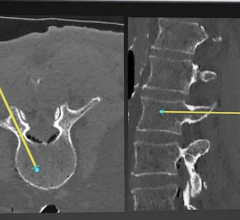
October 17, 2012 — The Department of Veterans Affairs (VA) leads the nation in breast cancer screening rates and has outperformed non-VA health care systems in breast cancer screenings for more than 15 years, with 87 percent of eligible women receiving mammograms in the VA health care system in fiscal year 2010.
In comparison, in 2010, the private sector screened 71 percent of eligible women, Medicare screened 69 percent and Medicaid screened 51 percent, according to Healthcare Effectiveness Data and Information Set, a tool used by more than 90 percent of U.S. health plans to measure performance on important dimensions of care and service.
Since 2000, the number of female veterans using VA health care has more than doubled, from nearly 160,000 to more than 337,000 in fiscal year 2011. As the number of women veterans increases rapidly, VA not only focuses on improving access to breast screenings and coordination of care, but also trains providers in the latest breast exam techniques.
VA provides mammograms for all veterans, with 45 facilities providing services on-site utilizing digital mammography. Some facilities offer mammograms to walk-in patients and same-day ultrasounds. VA also offers mobile mammography in some areas of the country. This mammogram technology-on-wheels allows women veterans in rural areas to get screening mammograms and have their mammograms read by a VA breast radiologist, without traveling far from home. All this improves access for more than 337,000 women VA health care users.
“VA is different from other health care systems in that we serve a female population that is spread across the continental United States, located in both rural and urban areas,” said Patricia Hayes, chief consultant for VA’s Women’s Health Services. “Because of that we have to be creative and innovative about the way we provide screenings, track a woman’s mammogram results and breast cancer care and train our providers in the latest diagnostic techniques and breast cancer treatments.”
In many cases, VA is using technology to bridge the distance between providers at facilities in its 21 regions throughout the nation. VA uses simulation technology to train VA providers in the latest breast exam techniques.
VA is also developing a breast cancer clinical case registry to track when a provider orders a mammogram, the results of the test and the follow-up care provided. The system will improve care coordination and help VA track and study breast care outcomes throughout VA. It is expected to be available in 2013.
These efforts in breast cancer diagnosis and treatment are part of a larger VA initiative to enhance all health care services for women veterans. Women make up six percent of Veterans who use VA health care, but they are expected to make up a larger segment of all VA health care users in the future. VA is preparing for this increase by expanding access to care, enhancing facilities, training staff and improving services for women. Expanded outreach to women veterans is another goal in the initiative, and VA’s Women’s Health Services regularly creates posters and messages to educate women veterans about key women’s health issues. In celebration of Breast Cancer Awareness Month in October, VA reminds patients and providers about the importance of early detection.
For more information: www.va.gov/womenvet and www.womenshealth.va.gov


 July 18, 2024
July 18, 2024 







